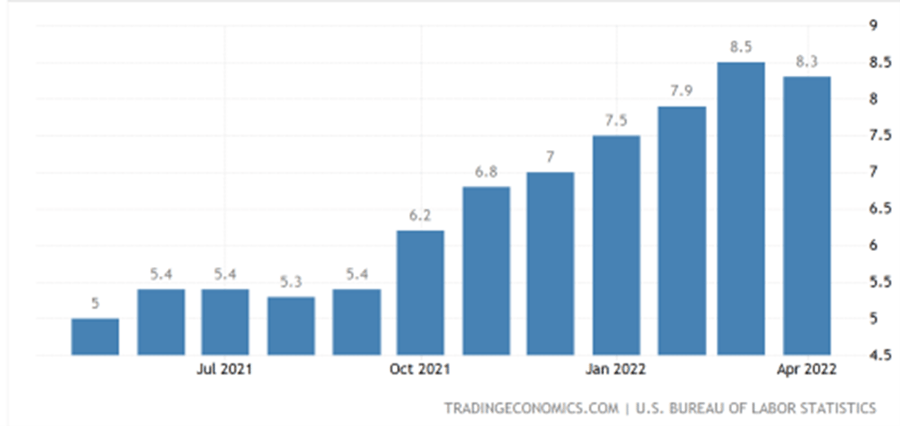If April’s inflation rate print of 8.3% were to stick around, it would take about nine years to turn a dollar into fifty cents in terms of the number of goods and services it can buy. The rate that prices are creeping up for food, gas, rent, and consumer goods across the board is causing consumers to lose buying power at a worrisome rate.
But just how fast is inflation burning through your cash. The Rule of 72 can help you understand the long-term consequences of this “Hidden Tax.”

Rule of 72
This often-used cocktail napkin appraisal is generally applied to investment returns. It tells investors how many years it will take to double their money at a certain rate of return.
It works like this: Divide 72 by an annual rate of return rate to determine the amount of time it takes for an investment to double. A fund that returns a yield of 3% will double in 24 years. Similarly, one with a 9% return will double in 7 years.
Reverse Rule of 72
The rule works for inflation but in reverse. You can use the same logic to determine how quickly your purchasing power will be halved. In the example above, if you take the April inflation rate of 8.3% and divide that into 72, it returns a value of 8.67 years. In just a little under 9 years, if this inflation rate would persist, your dollar is now worth 50 cents in terms of how far it can go. In other words, at today’s prices, a $4.50 gallon of gas would cost $9.00 in 2031.
There are a few caveats, however.
For one, this rule-of-thumb assumes the inflation rate will stay elevated and constant for an extended, measurable period of time. It’s not certain how long these record-high inflation rates will hang around. The Federal Reserve is in the midst of an aggressive tightening cycle, raising the benchmark rate to incrementally elevate borrowing costs, put the brakes on the economy and pull back prices without a crash landing us into a recession.
Some price inflation however is good and healthy for the economy. The Federal Reserve typically maintains a long-term target inflation rate of around 2%. From what we learned earlier, the inflation rate would halve the value of money in about 36 years, using the Rule of 72.
Of course, rising costs don’t impact all consumers and households the same way. Some families may have a personal inflation rate that differs from the national average, depending on their buying habits. For instance, families with young children may spend a lot of money on disposable goods and have higher gasoline costs from running the kids around. Whereas a retired couple may have higher food costs from dining out for example.
Hourly wages and savings rates also act to offset at least some inflation. Workers have seen hourly pay increase at the most rapid pace in decades and some of those gains have kept with or outpaced inflation meaning their buying power hasn’t suffered as much attrition.
The conversation largely has been focused on how hard are your earnings and savings getting hit deflecting the rising cost of living. But what about your investment capital? Lately, it seems like not much of anything is working. High PE multiple stocks have been hammered into oblivion, the bond market, from a historical perspective, is having its worst performance since the late 1800s, and investor sentiment has turned decidedly bearish.
So where do you put your money? There is one asset class that serves to solve some of the problems the markets are experiencing. Senior Life Settlements are an effective hedge against inflation. The Soteria Capital Absolute Return Portfolio Series is a diversified life settlement platform that typically will return a minimum of 65% Total Return on a dollar-weighted basis over a life cycle.
$1.00 of cost basis in a life settlement has a future Yield-to-Maturity of $.65. In simple terms, if it takes 8 years to earn $.65 on your dollar, that’s a rate of return (simple interest) of 8.13%. By the Rule of 72, it would take 8.86 years to turn $1 into $2. That’s pretty close to the amount of time inflation would take in our example to cut your dollar in half.


